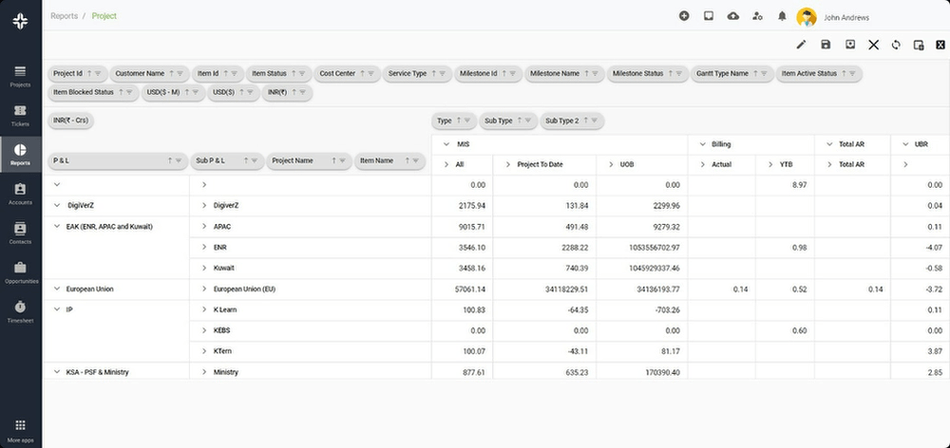Home » PSApedia
Project Cost Variance
Manage Finances Effectively with Project Cost Variance Analysis.

What is Project Cost Variance?
Project Cost Variance (PCV) is a financial metric used to measure the difference between the estimated budget of a project and the actual amount spent. In simpler terms, it helps in determining whether a project is under budget or over budget. A positive PCV indicates that the project is under budget, while a negative PCV suggests it’s over budget.
For businesses, especially those involved in project-based work, understanding PCV is crucial. It provides insights into the financial performance of projects and helps in making informed decisions.
Importance of Project Cost Variance
Understanding PCV is essential for several reasons:
1. Budget Management: It helps in identifying if a project is heading towards a financial overrun, allowing timely interventions.
2. Performance Analysis: PCV can be used to evaluate the performance of project managers and teams. A consistent negative variance might indicate inefficiencies or mismanagement.
3. Future Planning: Historical PCV data can be used for better budgeting in future projects.
4. Stakeholder Communication: For stakeholders, PCV offers a clear picture of the project’s financial health.

Importance of Project Cost Variance
Calculating Project Cost Variance
The formula to calculate PCV is:
PCV = EV − AC
Where:
EV = Earned Value
AC = Actual Cost
Example:
Let’s say for a project, the Earned Value (EV) is $10,000, and the Actual Cost (AC) incurred is $9,000.
PCV = $10,000 – $9,000
PCV = $1,000
In this case, the project is under budget by $1,000.
Project Cost Variance vs Other Metrics
While PCV is a valuable metric, it’s essential to understand how it differs from other related metrics:
1. Cost Performance Index (CPI): While PCV gives the variance in dollar terms, CPI provides a ratio. It’s calculated as CPI=EV/AC. A CPI greater than 1 indicates a favorable condition.
2. Budget at Completion (BAC): This is the total budget allocated for the project. PCV tells how much under or over budget a project is at a specific time, while BAC gives the total budget.
3. Estimate at Completion (EAC): EAC provides an estimate of the total cost of the project at completion. It considers the current performance and remaining work.
| Metric | Description | Use Case in PSA |
|---|---|---|
| Project Cost Variance (PCV) | Measures the difference between budgeted and actual project costs. Positive values indicate cost savings, while negative values indicate cost overruns. | Assess the financial health of projects, control project budgets, and make data-driven decisions. |
| Billable Utilization Rate | Measures the percentage of billable hours worked by employees compared to their total available work hours. High utilization rates indicate efficient resource allocation. | Helps in optimizing resource allocation, increasing revenue, and ensuring teams are productive. |
| Customer Satisfaction (CSAT) | Assesses client satisfaction with delivered services or project outcomes. Typically measured through surveys or feedback. | Evaluates the quality of services, identifies areas for improvement, and maintains strong client relationships. |
| Project Profit Margin | Calculates the profitability of a project by subtracting the project costs from the revenue generated. Higher margins indicate more profitable projects. | Helps in identifying projects that contribute more to the bottom line and optimizing pricing strategies. |
Using Project Cost Variance in Professional Service Automation
In the realm of Professional Service Automation, PCV plays a pivotal role. PSA tools, like KEBS, integrate financial management features that allow businesses to track and manage project costs effectively.
1. Real-time Monitoring: With PSA software, businesses can monitor PCV in real-time, ensuring that projects remain financially viable.
2. Data-driven Decisions: Integrated financial analytics in PSA tools provide insights derived from PCV, aiding in better decision-making.
3. Resource Allocation: By understanding PCV, businesses can make informed decisions about resource allocation, ensuring that projects remain on track financially.
Ready to Optimize Your Project Cost Variance?
KEBS, a leading PSA software, offers a suite of tools designed to help businesses optimize their project financials. With KEBS finance management software, businesses can get a clear picture of their project’s financial health, ensuring that they stay on top of PCV.
KEBS resource management software ensures that resources are allocated efficiently, reducing the chances of cost overruns. Using tools like Gantt charts, businesses can plan and execute projects efficiently, ensuring they stay within budget.

KEBS Project Management
Ready to Optimize Your Project Cost Variance with KEBS? Dive deeper into KEBS capabilities and see how it can transform your project financial management. Contact us today or request a demo to get started.



